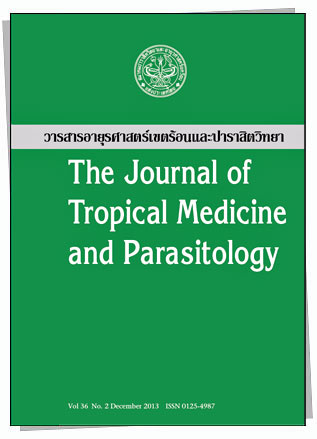Diversity of Blastocystis Subtypes in Humans
Main Article Content
บทคัดย่อ
Blastocystis is a widespread parasite which is highly prevalent in humans and many animal hosts in developing countries. It is transmitted mainly by a fecal-oral route. Blastocystis infections are more common in low-income communities, crowded conditions, and places with poor hygiene and sanitation. Currently, 13 or more subtypes (STs) have been identified in humans and animals based on characterization of the small-subunit ribosomal RNA (SSU rRNA) gene. Nine of these subtypes, ST1-ST9, have been detected in humans, with ST1-ST4 being most common. Several studies have revealed that some subtypes of Blastocystis isolated from humans can be observed in animals as well, suggesting that animal-to human or zoonotic transmission of Blastocystis can occur. Differences in subtype distribution of Blastocystis spp. depends on different reservoir hosts, geographical areas, and sources of infection, however, ST3 is the predominant subtype distributed worldwide. Most people with Blastocystis infection are carriers, and the clinical manifestations of symptomatic blastocystosis include gastrointestinal complaints, anorexia, joint pain, skin rash and diarrhea. The pathogenicity of this organism remains unclear and further studies are required for better understanding.

